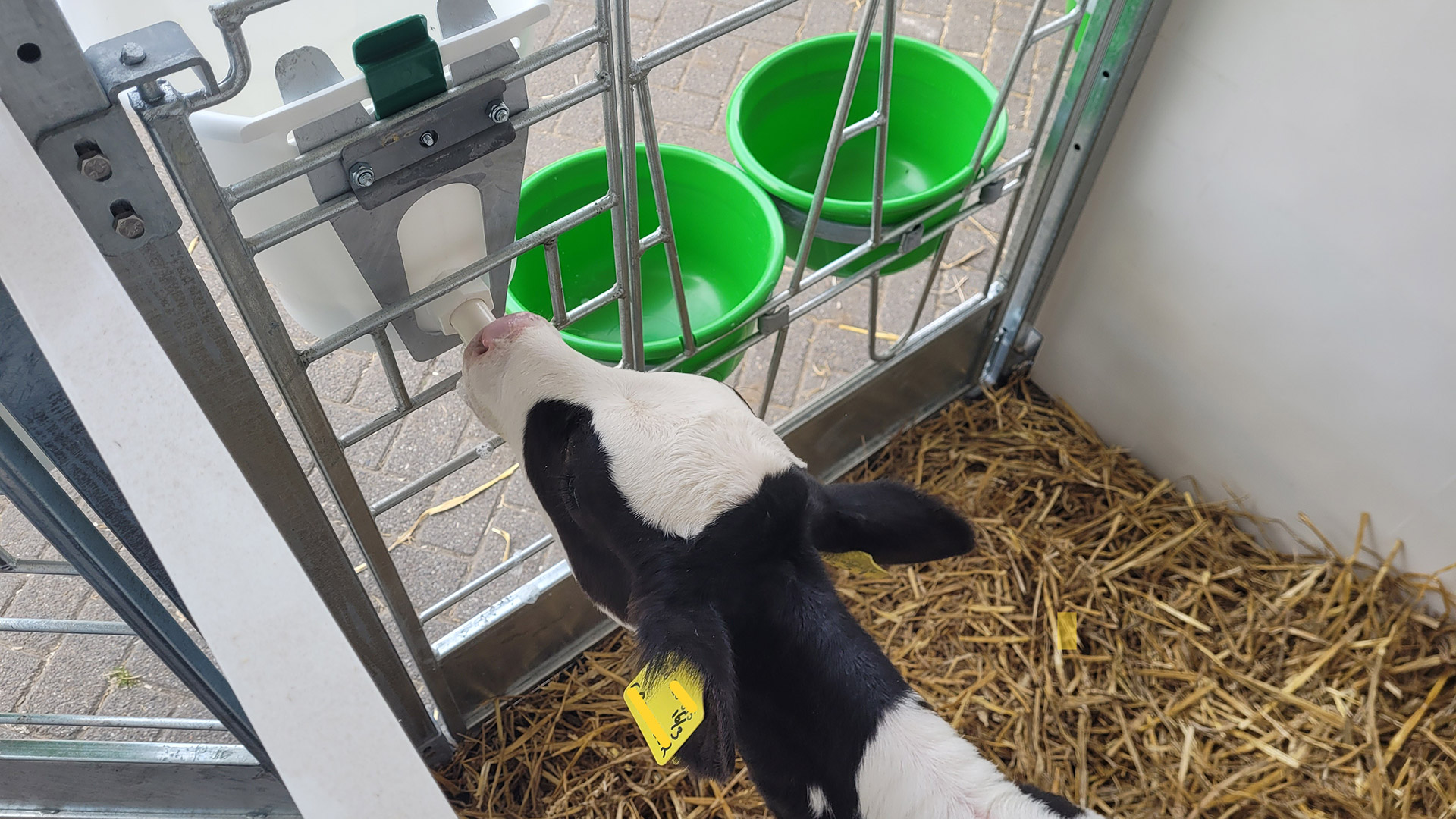Tips about teats
The teat you choose affects how the calf drinks. This influences:
- How much milk the calf takes in
- How much saliva the calf produces
- How calmly the calf drinks
- Hygiene around milk feeding

The teat you choose affects how the calf drinks. This influences:

The type of teat, such as the FreeFlow or Valved, is important for the health, growth, and calmness of calves. The right teat also helps to reduce fly problems. This article explains the differences and benefits of both types.
Which teat do you choose: FreeFlow or Valved? Read our tips below
Valved teat
This teat has a ball valve. It makes drinking easier for the calf. Suitable for both milk and colostrum. Also ideal for weak or sick calves.
FreeFlow teat
This teat has no valve. The milk flows more slowly due to natural resistance, so the calf drinks more slowly. This helps produce more saliva, which improves digestion and supports healthy growth. A special FreeFlow teat is available for colostrum or for weak calves.
Which teat fits your way of feeding calves?
Do you feed 2–3 times per day, or let calves drink freely (ad libitum)?
Then choose the Valved teat.
Do you feed 2–3 times per day and want better results, like more saliva and better digestion?
Then use the FreeFlow teat, together with the special FreeFlow colostrum teat.
Reducing fly nuisance
A good teat increases saliva production, which is good for digestion. But saliva can spill! Keep in mind:
Hygiene matters